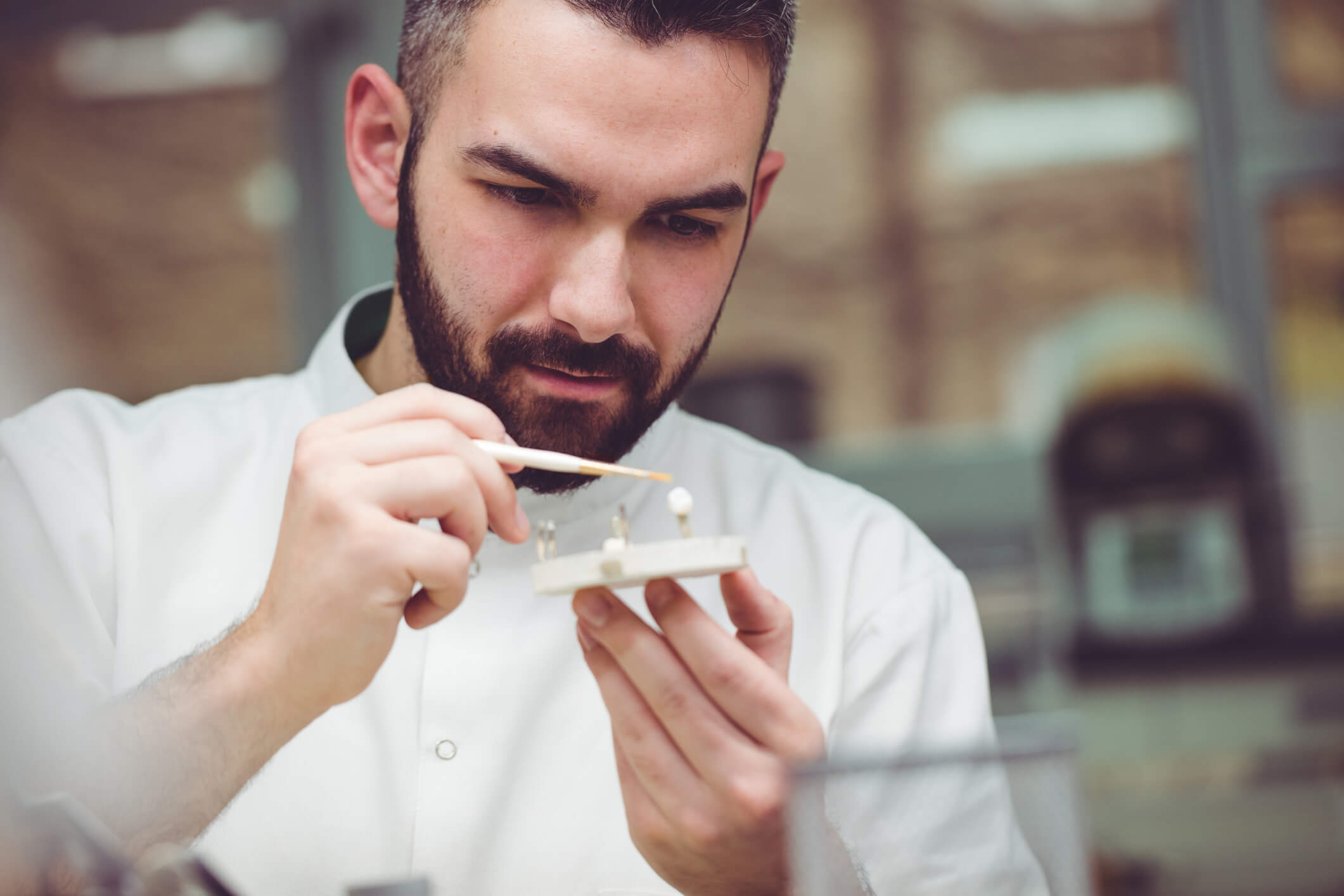Dental Onlays and Crowns: Understanding Different Tooth Fixes
Posted: June 24, 2020
Last Modified: March 19, 2021

Cavities and other forms of tooth damage can happen to anyone at any stage of life, and when they do, they need to be fixed. Fillings are the typical go-to for tooth damage (especially cavities), but sometimes, something more extensive is required. That’s where dental onlays and dental crowns enter the picture. Each one has a specific role to play in the restoration of a tooth, and today, we’re going to explore each of them.
Understanding Dental Onlays: When More is Needed
When a cavity is particularly large, or when the damage to the tooth has resulted in a large opening in the top of the tooth, a dental onlay will be placed. They are sometimes called “indirect fillings,” since they have to be specially made, rather than a directly-applied regular filling.
Think of dental onlays as the balance between a small filling and a full crown. A dental onlay covers at least one cusp of the tooth, restoring structure and function to the rest of the original tooth. It’s not quite as extensive as a crown, but instead covers a portion of the upper structure.
Since each onlay is custom-created, the first thing to do will be to remove the damaged material from your tooth and create a mold of the tooth. Traditionally, this was done with putty, but today, we take digital scans of your tooth and create a 3D model. We can then email those STL files to any lab in the world before you leave the office. The onlay is a piece of material – typically either ceramic, porcelain, or dental composite (although in the past, they were made out of gold) – that is specially created to fit the cavity in your tooth.
Onlays will require a few appointments to be successfully installed. The first appointment is when the mold of your tooth will be taken, and before you leave, you’ll be outfitted with a temporary onlay or filling. When you return, the temporary onlay will be removed, and the final onlay will be fitted into place and bonded to your tooth with either a special cement or a light-activated resin.
Once it’s in, all you have to do is take care of it. Onlays tend to last longer than fillings do. To keep them clean and in good shape, make sure you brush and floss twice every day (and visit your dentist for regular cleanings!).
What is a Dental Crown?
When the tooth is severely decayed, a dental crown may be called into action. Crowns are generally reserved for cases in which only the root of the tooth can be saved since the crown effectively replaces the outer exterior of the tooth. When this happens, the damaged outer material of the tooth will be removed, and the remaining tooth will be cleaned and smoothed to prepare for the crown placement.
A mold of your tooth will be taken, and, as with the onlays, a custom-made crown will be prepared. You’ll get a temporary crown to protect your tooth until the final one is ready. When the final one is installed, it’ll be placed right on top of your tooth and cemented in place. Your tooth will look brand new!
How Do I Know Which One I Need?
It’s hard to tell what type of tooth repair you’ll need just by shining a light at your own mouth in the bathroom mirror. The best way to know for sure is to go see a professional. Come see us: your friendly Barrie dentist’s office.
We’ll clean your teeth up to make it easier to see what’s going on, and we’ll provide you with a professional assessment of the type of repair that would best restore form and function to your tooth and keep your oral health in top shape.
For more information on dental crowns and onlays, give us a call at (705) 721-1143. You can also contact us online.


